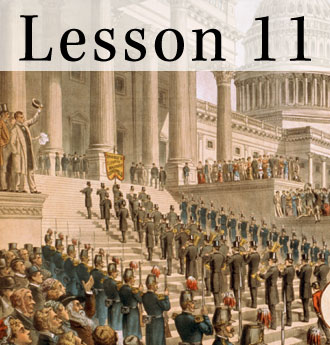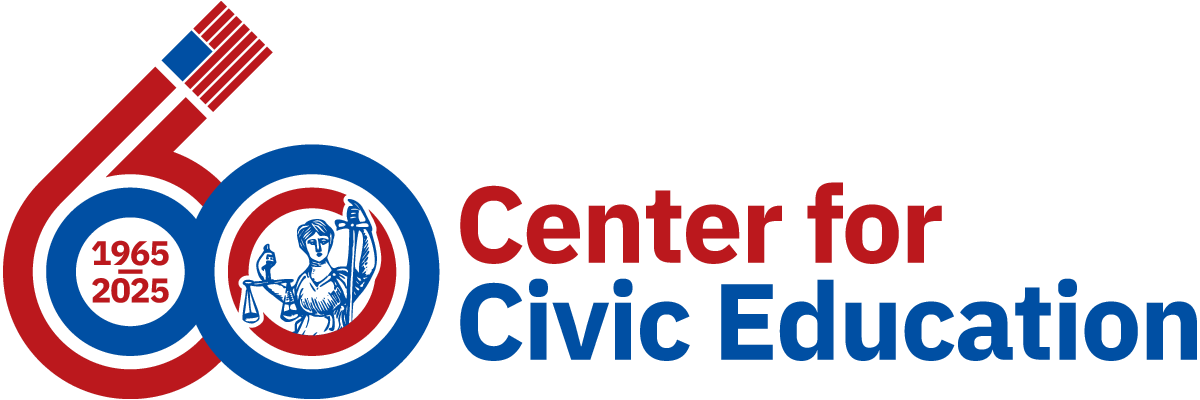The Resource Center » Level 3 » Unit 2 »
Lesson 11: What Questions Did the Framers Consider in Designing the Three Branches of the National Government?

Lesson Purpose
Lesson Objectives
- explain the role of each of the three branches and describe how the Constitution organizes them,
- explain how and why the system of checks and balances contributes to limited government, and
- evaluate, take, and defend positions on how the president of the United States should be elected and issues relating to the appointment and service of justices of the Supreme Court.
Lesson Terms
Lesson Biographies
Lesson Court Cases
Case Summary
Following the Supreme Court's decision in Bush v. Palm Beach County Canvassing Board, and concurrent with Vice President Al Gore's contest of the certification of Florida presidential election results, on December 8, 2000 the Florida Supreme Court ordered that the Circuit Court in Leon County tabulate by hand 9,000 contested ballots from Miami-Dade County. It also ordered that every county in Florida must immediately begin manually recounting all "under-votes" (ballots which did not indicate a vote for president) because there were enough contested ballots to place the outcome of the election in doubt. Texas Governor George Bush and his running mate, Richard Cheney, filed a request for review in the U.S. Supreme Court and sought an emergency petition for a stay of the Florida Supreme Court's decision. The U.S. Supreme Court granted review and issued the stay on December 9. It heard oral arguments two days later.
Question(s)
Did the Florida Supreme Court violate Article II, Section 1, Clause 2 of the Constitution by making new election law? Do standardless manual recounts violate the Equal Protection and Due Process Clauses?
Answer(s)
Noting that the Equal Protection Clause guarantees individuals that their ballots cannot be devalued by "later arbitrary and disparate treatment," the unsigned opinion issued on behalf of the entire Court held 7-2 that the Florida Supreme Court's scheme for recounting ballots was unconstitutional. Even if the recount were fair in theory, it was unfair in practice. The record suggested that different standards were applied from ballot to ballot, precinct to precinct, and county to county. Because of those and other procedural difficulties, the court held that no constitutional recount could be fashioned in the time remaining (which was short because the Florida legislature wanted to take advantage of the "safe harbor" provided by 3 U.S.C. Sec. 5). Loath to make broad precedents, the opinion limited its holding to the present case. Rehnquist (in a concurring opinion joined by Scalia and Thomas) argued that the recount scheme was also unconstitutional because the Florida Supreme Court's decision made new election law, which only the state legislature may do. Breyer and Souter (writing separately) agreed with the Court's holding that the Florida supreme court's recount scheme violated the Equal Protection Clause, but they dissented with respect to the remedy, believing that a constitutional recount could be fashioned. Time is insubstantial when constitutional rights are at stake. Ginsburg and Stevens (writing separately) argued that for reasons of federalism, the Florida supreme court's decision ought to be respected. Moreover, the Florida decision was fundamentally right; the Constitution requires that every vote be counted.
Lesson Primary Sources
From Wikipedia: Federalist No. 37 is an essay by James Madison, published on January 11, 1788 discussing some of the political questions raised at the Constitutional Convention, such as the question of the authority of the state versus the liberty of the people. Among other problems faced at the convention, including representation of small and large states, the balance between federal and state authority and geographical concerns, Madison points out how wonderful it is that delegates could overcome them.






